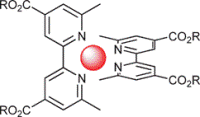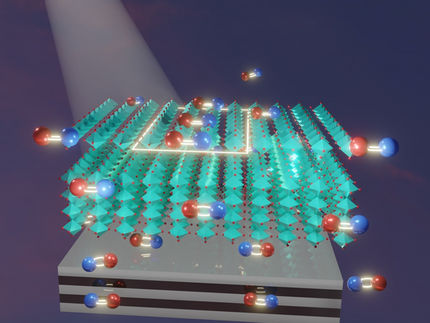Copper: An element of surprise
Researchers in Switzerland have developed efficient copper-functionalised dye-sensitized solar cells as an alternative to ruthenium-functionalised systems.
Edwin Constable and colleagues at the University of Basel, and at Ecole Polytechnique Federale de Lausanne, in Switzerland, have synthesised carboxylate-derivatized copper complexes as dye stuffs for TiO2 dye-sensitized solar cells (DSSCs).

Dye-sensitized solar cells with carboxylate-derivatized {CuIL2} complexes are surprisingly efficient and offer a long-term alternative approach to ruthenium-functionalized systems.
Edwin Constable / University of Basel
The conversion of light to electricity is an important issue and there are two technologies of primary interest in the construction of photovoltaic cells. The first is based on silicon and the second on dye-modified semiconductor surfaces. The DSSCs reported in this work have surprisingly high incident photon to current efficiencies and therefore could be viable alternatives to the more expensive ruthenium-based systems.
Photovoltaic devices based on dye-modified semiconductor surfaces have efficiencies approaching silicon and are therefore attractive alternatives, but traditionally utilise ruthenium dye-stuffs which are both expensive and rare. Constable and his team have therefore investigating copper(I) complexes with oligopyridine ligands which possess similar photophysical properties to ruthenium dyes, and have discovered the resultant prototype devices are surprisingly efficient.
The motivation behind this work is to help solve the approaching crisis in energy requirement in the world. By developing relatively cheap dyes for photovoltaic devices, Constable and co-workers hope to provide the basis for an attractive alternative to traditional energy sources.
'The potential for tuning the dyes to give device efficiencies approaching that of ruthenium-based systems will be a driver in our future research and the greatest challenge lies in the scale-up of the dye and device construction,' said Constable.
Original publication: Edwin Constable et al., Chem. Commun., 2008
Most read news
Topics
Organizations
Related link
Other news from the department science

Get the chemical industry in your inbox
From now on, don't miss a thing: Our newsletter for the chemical industry, analytics, lab technology and process engineering brings you up to date every Tuesday and Thursday. The latest industry news, product highlights and innovations - compact and easy to understand in your inbox. Researched by us so you don't have to.





























































